

Breaking Down Barriers to Heritage and Leisure: Historic Royal Palaces
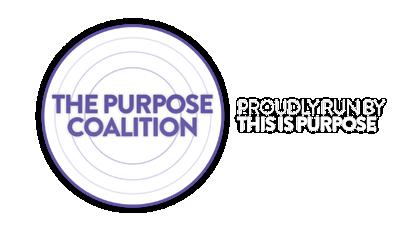
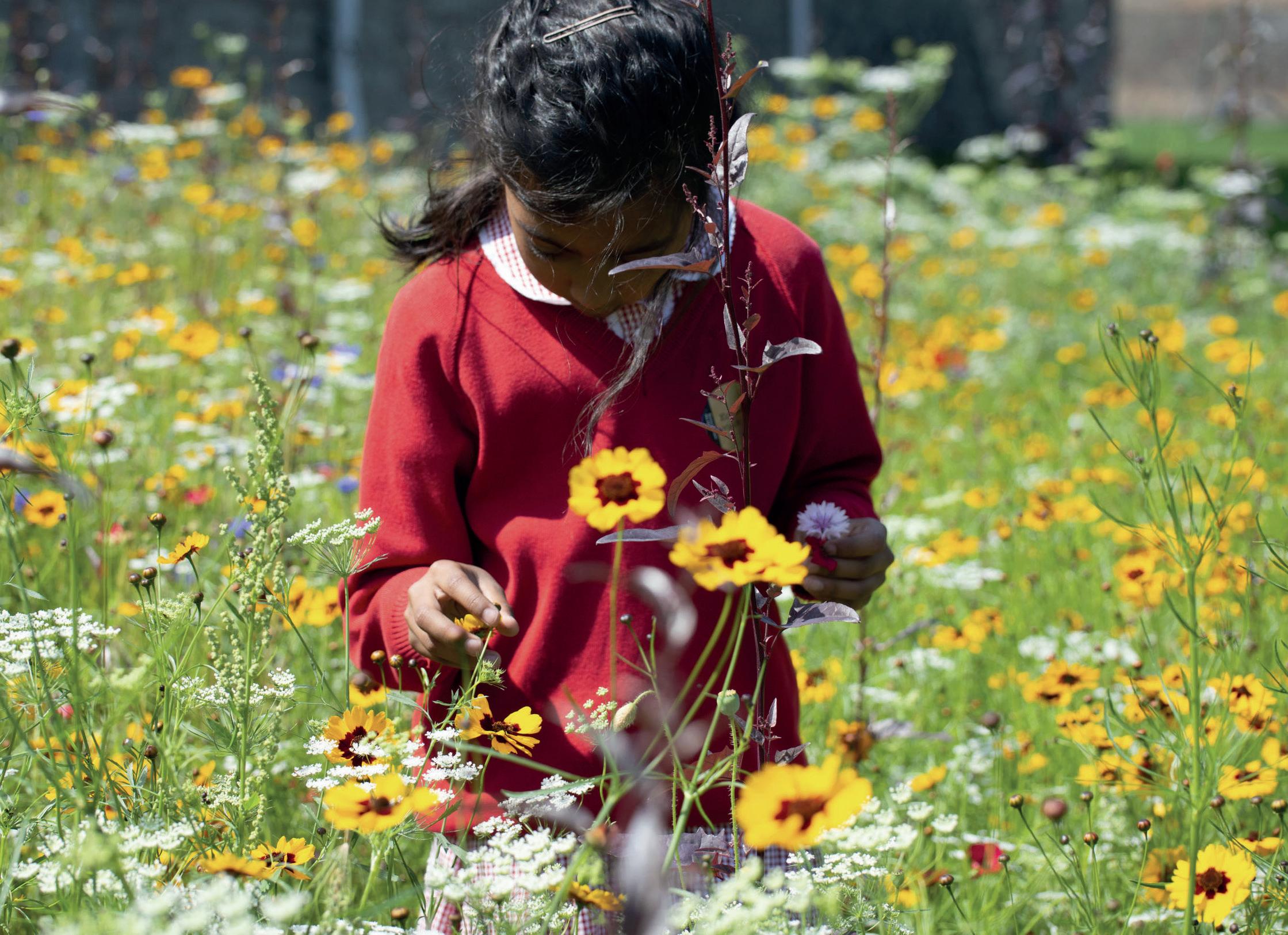




Breaking Down Barriers to Heritage and Leisure: Historic Royal Palaces



Rt Hon Justine Greening, former Secretary of State for Education and Chair of the Purpose Coalition
Spanning over a thousand years of history in the United Kingdom, our heritage sites are so much more than landmarks. Nationally, they play a key role in the political, cultural and architectural heritage of Britain; locally they are very much a part of their communities. They are also gateways to understanding our collective past and shaping a more inclusive future.
With the potential to boost social mobility across the country, the heritage sector should be one which offers equal opportunity for everyone. Yet access to opportunities within the sector is uneven and is often limited by socioeconomic barriers and underrepresentation.
As an independent charity responsible for the stewardship, conservation and public engagement of six of the most iconic historic sites in the United Kingdom, Historic Royal Palaces (HRP) can play a significant part in driving change.
Focused on conservation excellence, immersive public programming and educational outreach, its works aims to preserve these sites for future generations while also making them relevant and accessible to contemporary audiences.
The wider heritage and leisure sector is an integral part of the UK’s cultural landscape and its broader social and economic fabric. The Purpose Coalition’s Breaking Down Barriers in Heritage and Leisure initiative, which I chair, aims to gather unique perspectives from the sector and develop strategic approaches that will drive opportunity. Through a series of structured roundtable discussions, we have identified examples of best practice across four key elements - outreach, access, recruitment and progression. These are the critical areas where strategic efforts can unlock greater social mobility and widen the talent pipeline. Addressing these issues requires a concerted effort, strategic partnerships and a commitment to transparency and measurable progress.
This report demonstrates the wide range of best practice HRP is already undertaking in each of the four areas of focus, from its apprenticeship schemes at post-GCSE to degree level covering a wide range of job roles to its Community Access Scheme which currently partners with over 500 community organisations across London and Northern Ireland to engage people who might never otherwise consider a historic palace a space for them. The recommendations outlined in the report offer practical solutions that will help drive sustained and meaningful social impact.
HRP and the wider heritage and leisure sector have a vital role to play, not only in environmental stewardship but in shaping a society where opportunities are genuinely available to all. This report is a significant contribution to that ambition, demonstrating that when institutions commit to genuine inclusion, they don’t simply broaden their reach, they fundamentally enhance their social impact and community value.
The heritage and leisure sector plays a vital role in both the UK’s cultural landscape and its broader social and economic fabric. From preserving historical assets and fostering national identity to promoting wellbeing and generating tourism revenue, the sector is a cornerstone of the country’s community life and economy.
Heritage and leisure organisations support individuals, families and communities by offering spaces for reflection, learning, recreation and engagement. These organisations safeguard the UK’s rich history and traditions, while also driving local regeneration, attracting inward investment and strengthening regional pride. Their role is especially significant as the country faces periods of economic uncertainty and societal change, offering resilience and continuity through culture and connection.
Trust is a central element of the sector’s relationship with the public. Through careful curation, community consultation, and stewardship of cultural heritage, organisations ensure that stories are told accurately and inclusively. This fosters public trust in institutions and promotes a shared sense of identity across generations and communities.
Heritage and leisure sites also contribute significantly to public value. Museums, galleries, theatres, parks and historic landmarks help foster educational engagement and promote physical and mental wellbeing. They also support the wider economy by creating jobs, attracting tourism and encouraging local spending.
The sector is a major employer, encompassing a wide range of professions, from conservators and curators to horticulturists, performers, and visitor experience staff. It offers fulfilling careers to people with diverse skills and passions, and provides opportunities for training, upskilling and lifelong learning.
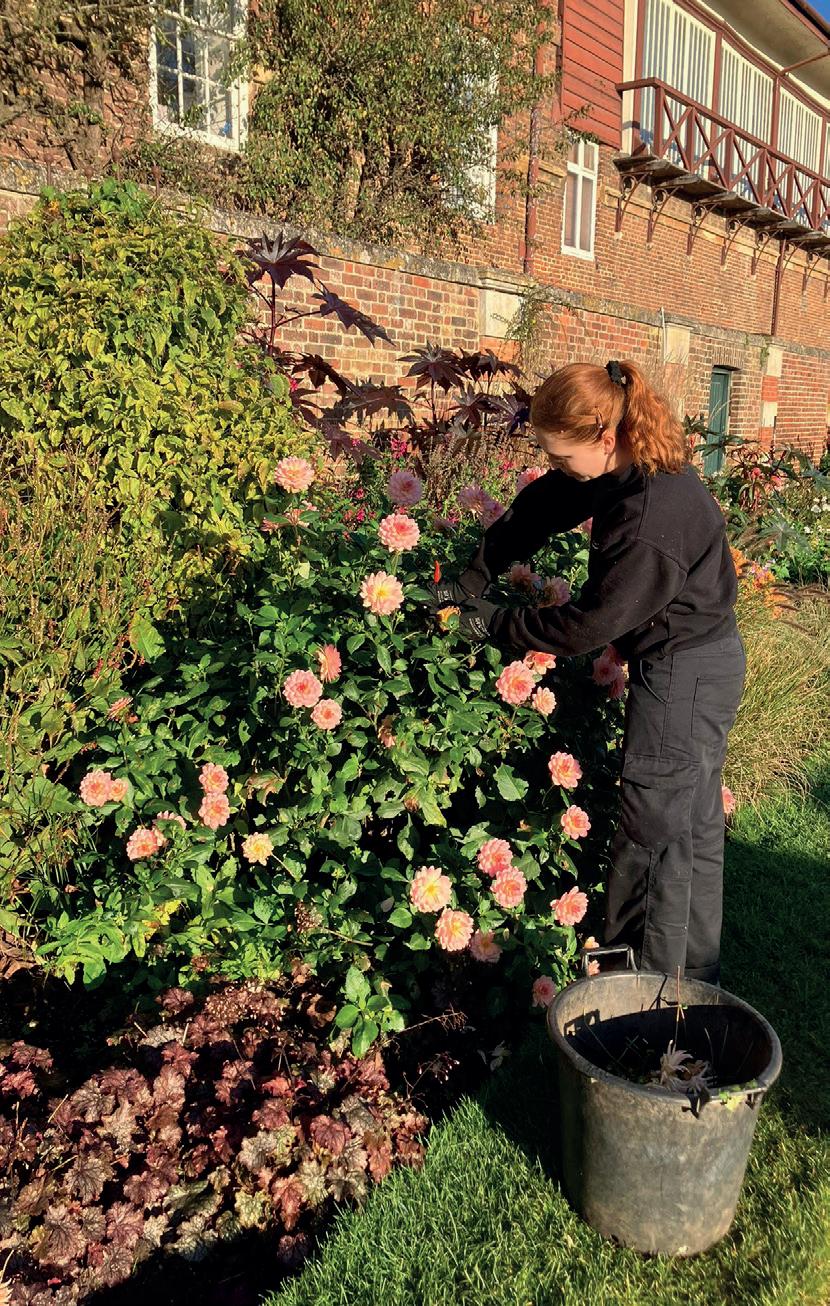
However, ensuring that opportunities within the heritage and leisure sector are equally accessible to all remains a significant challenge. Individuals from traditionally underrepresented groups and lower socioeconomic backgrounds often face barriers to accessing opportunities in education, training, volunteering and employment within the sector.
Outreach initiatives aimed at widening participation are often concentrated in areas already well-served by cultural infrastructure, leaving behind ‘cultural cold-spots’- regions where engagement with heritage and leisure is limited. Young people in these areas may grow up with little exposure to or understanding of potential careers within the sector.
Work experience and volunteering opportunities, which are often key entry points into heritage and leisure roles, are frequently unpaid or require travel to urban centres, posing financial and logistical barriers for many. This creates a pipeline challenge for the sector, limiting its ability to draw on the full diversity of UK talent.
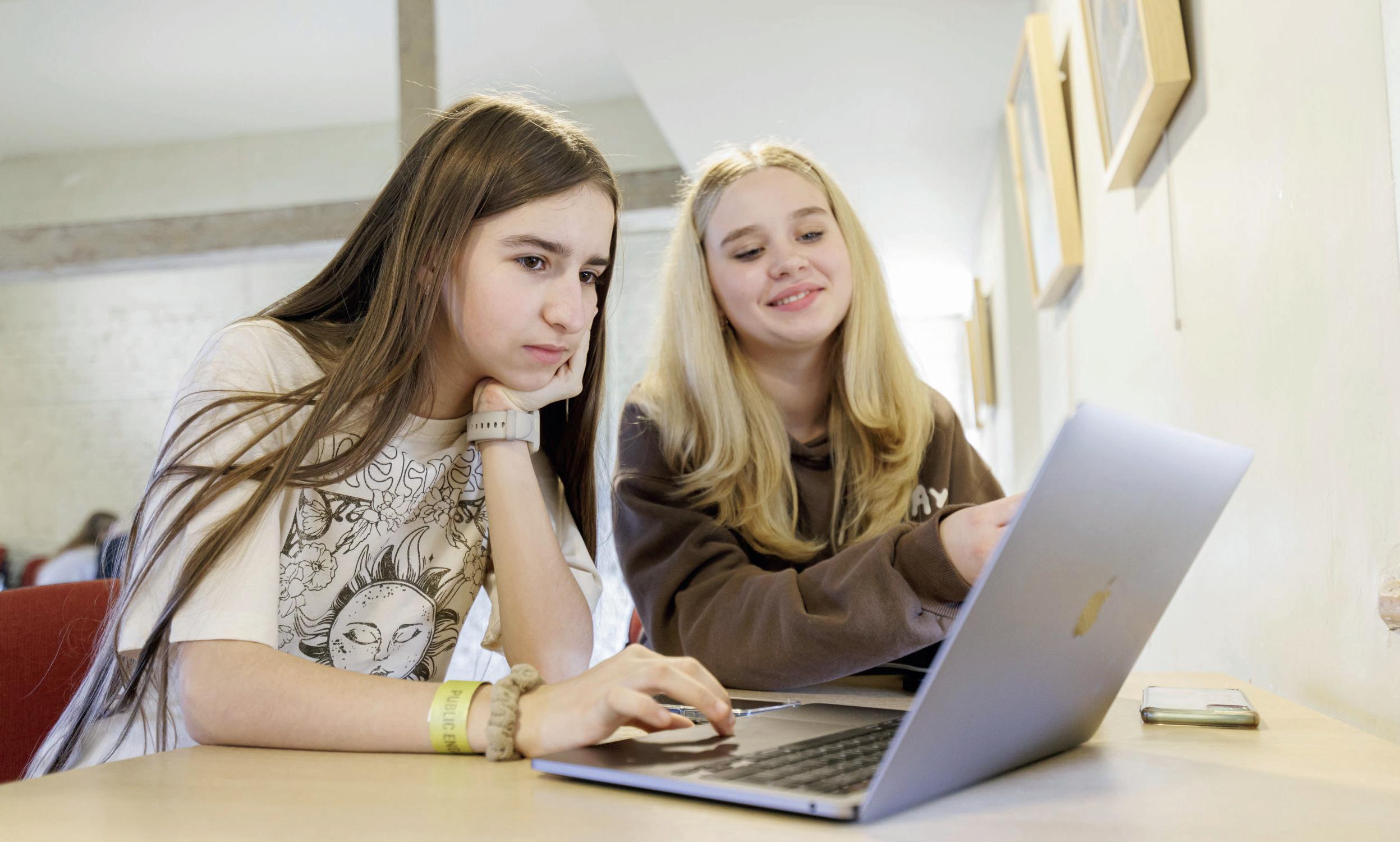
While many organisations have adopted inclusive recruitment practices, challenges remain. A continued focus on traditional academic qualifications and prior experience can overlook the potential of individuals from non-traditional or marginalised backgrounds. Unconscious bias, a lack of cultural familiarity and rigid institutional cultures further restrict entry and advancement.
Progression within the sector also reveals disparities. Individuals from underrepresented backgrounds may struggle to access mentoring, leadership development or feel included in professional networks. For those with disabilities or neurodivergent needs, a lack of workplace flexibility or understanding can inhibit progression and inclusion.
The nature of heritage and leisure work- often time-sensitive, grant-dependent and reliant on public funding- adds to the challenge of resourcing sustained equity and inclusion initiatives. However, this constraint also provides an opportunity to rethink and redesign practices that embed social impact at the heart of heritage and leisure work.
The Breaking Down Barriers in Heritage and Leisure initiative, chaired by Rt Hon Justine Greening, is working with organisations across the UK to identify and implement bold, practical solutions to unlock opportunity, foster inclusion and ensure the sector reflects and serves the full diversity of the nation.
For those with disabilities or neurodivergent needs, a lack of workplace flexibility or understanding can inhibit progression and inclusion.
Historic Royal Palaces (HRP) is an independent charity responsible for the stewardship, conservation and public engagement of six of the most iconic historic sites in the United Kingdom: the Tower of London, Hampton Court Palace, Kensington Palace, Banqueting House, Kew Palace and Hillsborough Castle. These extraordinary places span nearly 1000 years of history, playing pivotal roles in the political, cultural and architectural heritage of Britain.
HRP was established in 1998 as a Royal Charter Body with charitable status and operates independently of government funding. HRP’s ambition is to be a charity for everyone, committing to manage, look after and improve its palaces to a high standard and open them to the public so that everyone can learn about the historical buildings, their stories and what it takes to look after them. The organisation is committed to preserving these heritage sites for future generations while also making them relevant and accessible to contemporary audiences.
Central to HRP’s work is a dedication to conservation excellence, immersive public programming and educational and community outreach. Conservation efforts include maintaining original structures, conserving historical interiors and collections and managing expansive gardens and landscapes. Through exhibitions, live historical interpretation, festivals and digital storytelling, educational and community engagement programmes HRP ensures that the past resonates with modern audiences, encouraging dialogue about the legacy of power and monarchy.
HRP is also a leader in heritage education, offering dynamic learning experiences to students of all ages, both on-site, via outreach, through digital platforms and via teacher training. Its learning programmes aim to inspire curiosity,
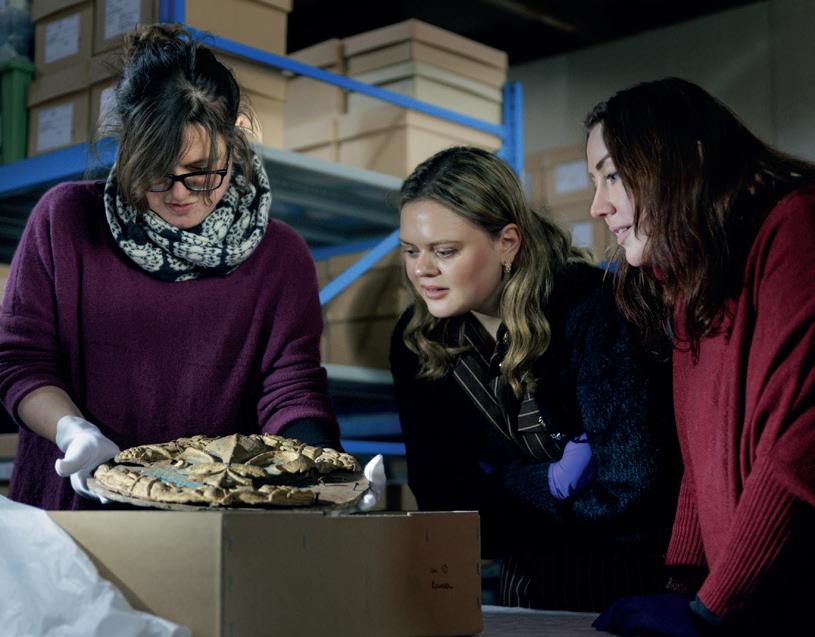
promote critical thinking and bring history to life in engaging ways. In addition to exploring the past, these programmes encompass a broad range of cross-curricular themes, including STEM, PSHE and wellbeing, the arts and careers education, reflecting HRP’s commitment to supporting the wider curriculum and nurturing holistic development in learners.
HRP’s community programmes are shaped through a community-centred approach that prioritises co-creation, inclusivity, accessibility and equity. Delivered in partnership with local organisations, these initiatives are designed to extend a warm welcome, remove barriers to participation, and reflect the diverse needs and interests of people living near the palaces, from early years to older age. Activities range from co-created projects and creative engagement to social and wellbeing-focused programmes, enabling individuals and communities to connect with heritage in meaningful and relevant ways.
As a charity, HRP relies on visitor income, memberships, donations and commercial partnerships to fund its operations. Its work exemplifies the balance between historical preservation and innovative public engagement, ensuring these palaces remain vibrant places of discovery and reflection in the 21st century.
The Breaking Down Barriers to Heritage and Leisure project, chaired by Rt Hon Justine Greening, shines a light on leading organisations within the sector, with the aim of gathering unique perspectives and developing strategic approaches that will drive opportunity.
The Purpose Coalition has worked closely with leading organisations to explore how the heritage and leisure sectors can take the lead in improving inclusion and social access, helping to embed best practice across the board and widen its impact.
Through a series of structured roundtable discussions, key examples of best practice have been identified, along with the persistent barriers that limit engagement and progression within heritage and leisure. These discussions centred on four thematic pillars - Outreach, Access, Recruitment and Progression - which collectively represent the full journey of an individual seeking to connect with, participate in or build a career in these sectors.
The insights from the roundtables with Historic Royal Palaces are captured in Section 3 of this report. This section outlines the key barriers that prevent equal opportunity within HRP, alongside targeted recommendations to remove those barriers. Through this analysis, the project aims to drive meaningful change and make the sector more welcoming and accessible to all.
Equally important is the wealth of existing good practice already underway among participating organisations. Section 3 also showcases a range of HRP best practice and initiatives that illustrate the steps being taken to promote inclusion, broaden outreach and improve the experience of those engaging with heritage and leisure.
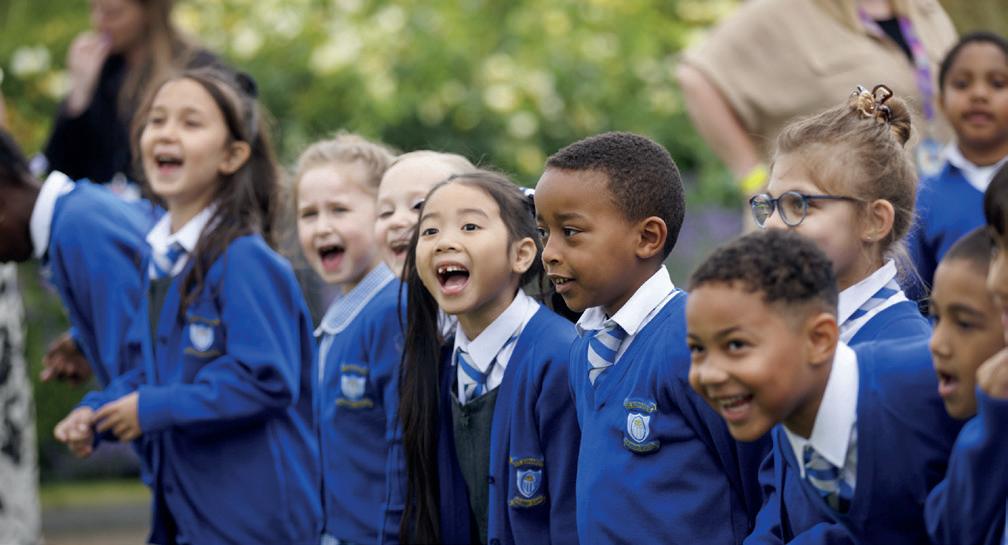
Outreach, through external engagement with the wider public to raise awareness, provide support and build relationships with the aim of encouraging participation and fostering mutual understanding, is a vital component of Historic Royal Palaces’ (HRP) strategy to widen access to opportunity across the heritage and leisure sectors. It can play a foundational role in sparking early interest in heritage careers and dismantling the structural and perceptual barriers that may prevent individualsparticularly young people and underserved communities who may feel that heritage sites and stories are not for them- from engaging with the sector.
HRP’s new strategic vision to become a charity for everyone puts outreach at its heart, recognising that widening participation means offering more than just access to physical sites. To truly open up the heritage sector, HRP is also prioritising offsite and digital engagement so that new audiences, regardless of geography or financial means, can discover and participate in the heritage world and gain valuable cultural and social capital. From work in schools and communities to volunteering and online resources, HRP’s outreach mission to open the doors to heritage for everyone is clear.
As part of its commitment to becoming a national leader in heritage education, HRP delivers an extensive schools’ programme designed to inspire and engage children and young people from the earliest stages of their learning. Every year, HRP reaches approximately 300,000 learners both on-site and through offsite school visits, digital learning sessions and teacher training, offering transformative educational experiences that enrich classroom learning and broaden horizons.
Crucially, HRP targets its school outreach to reach those furthest from opportunity. Two examples of this are the Kensington Enrichment Project (KEP) and the Schools Access Fund (SAF).
HRP’s KEP is a flagship five-year partnership with six London schools serving high proportions of pupils eligible for Pupil Premium, with English as an additional language or special educational needs. Using Kensington Palace and its gardens as a dynamic learning space, the programme offers tailored sessions designed to enrich the curriculum, support wellbeing, and build cultural capital.
Pupils explore topics such as identity, community, monarchy and place through creative, hands-on and reflective activities. The project also includes family engagement opportunities, professional development for teachers, careers opportunities for pupils and a robust evaluation framework to understand its long-term impact on learning, confidence and connection to local heritage.
The Schools Access Fund provides financial support for eligible state-funded schools and pupils who might otherwise be unable to visit HRP sites.
The fund offers free admission to the Tower of London, Hampton Court Palace, Kensington Palace and Hillsborough Castle, along with a travel bursary to support with transport costs and a facilitated, interactive session delivered by historic interpreters, ensuring that economic disadvantage does not prevent participation in high-quality, curriculum linked learning.
During 2024/25 20,000 student visits were funded by this. Teachers are also offered planning support, free resources, training opportunities and access to familiarisation visits to ensure they feel confident leading trips, thereby maximising the educational impact of the visit. These visits often mark a student’s first time in London or outside their hometown, highlighting the importance of removing financial and psychological barriers to participation.
Careers awareness is also a key focus. HRP runs dedicated careers days for Year 8 and 9 pupils and a full careers week for Years 10 and 11. These interventions are timed to align with key decisionmaking moments in students’ academic journeys and are intended to challenge preconceptions about heritage work, while showcasing the diversity of roles available across the sector.
Recognising that teachers are powerful influencers in students’ career paths and student learning, HRP is investing in teacher engagement through the development of a UK-wide programme ‘HRP Teachers’ .’ This comprises programmes for Initial Teacher Training and PGCE courses, on-going professional development opportunities for teachers such as on-line and on-site training courses and events for Primary, Secondary and SEND teachers, and an annual residential training course.
In addition, HRP supports teachers through its Bridging the Gap programme, which equips educators from target schools with resources and information about apprenticeships and vacancies within HRP, ensuring they can guide students toward opportunities in the sector.
To reach a national audience, HRP has also developed a suite of online resources, including podcasts, live digital sessions, lesson plans and activity packs, which are all freely accessible, to enable schools across the UK to incorporate heritage education regardless of proximity to a palace.
HRP’s community outreach work is a cornerstone of its mission to make heritage relevant and accessible to all. Its Community Access Scheme currently partners with over 500 community organisations across London and Northern Ireland to engage people who might never otherwise consider a historic palace a space for them.
The scheme supports groups who face significant social, financial or cultural barriers, helping them access HRP sites through free tickets, tailored visits and relationship-building activities. Looking ahead, HRP is exploring how to scale this programme nationally, recognising that people from all corners of the UK deserve to feel ownership over shared heritage.
The Amazing Days Out programme exemplifies HRP’s commitment to inclusive outreach. Designed for families and children who face multiple barriers, such as disability, caring responsibilities or financial hardship, it delivers memory-making visits in partnership with trusted organisations including charitable, educational and statutory organisations including Holiday Activity Food Schemes, Family Hubs and Food Poverty Teams. These curated experiences help participants feel welcomed, inspired and part of a broader cultural community.
A standout example of HRP’s community access work is the Dress Codes exhibition, developed with 25 Young Producers aged 14–17 from local youth groups, including Westminster City Council’s City Lions. These young people worked with HRP experts and creative professionals in music, fashion and storytelling to contribute directly to the exhibition’s content and design. The project not only offered insight into heritage and museum practice but demonstrated how young people from all backgrounds can influence cultural narratives and see themselves reflected in national stories.
HRP is undertaking extensive research with young Londoners, teachers, parents and youth workers to inform the development of a new programme for young people focussed on skills development and creativity.
Volunteering is a vital outreach mechanism for HRP, providing a low-barrier entry point into the organisation and an avenue for engaging individuals who may not initially see themselves as part of the heritage world. With around 800 active volunteers, HRP seeks to foster meaningful contributions to its charitable aims while building inclusive communities around its sites.
To diversify its volunteer base, HRP is developing partnerships with universities and colleges and encouraging young people from underrepresented backgrounds to volunteer. Future plans include development of similar partnerships with communitybased organisations, showcasing the diversity of HRP’s current volunteers in marketing and engagement materials, making it clear that heritage welcomes everyone. Work has also been undertaken to enable nondigital pathways into volunteering to promote inclusivity.
Later in 2025 a Steering Group focusing on developing diversity and inclusivity in volunteering will be formed. This Steering Group will include volunteers from underrepresented backgrounds.
3.1.4
Despite significant progress, HRP faces several challenges in delivering inclusive outreach at scale. One of the most pressing is reaching those furthest from opportunity. This requires deep collaboration with grassroots organisations, local councils and community infrastructure, from primary care networks to family hubs, that have built trust in communities over time.
Geographical access remains a substantial barrier. HRP’s six core sites are limited in location, meaning many potential participants face prohibitive travel costs. While digital and offsite engagement can offer solutions, in-person experiences remain irreplaceable for many learners and community members.
Working with schools also presents challenges. Teachers are often stretched and under-resourced, making long-term partnerships hard to sustain. HRP is therefore exploring how to reduce administrative burden and increase the value it offers to schools through more tailored, flexible and collaborative programming.
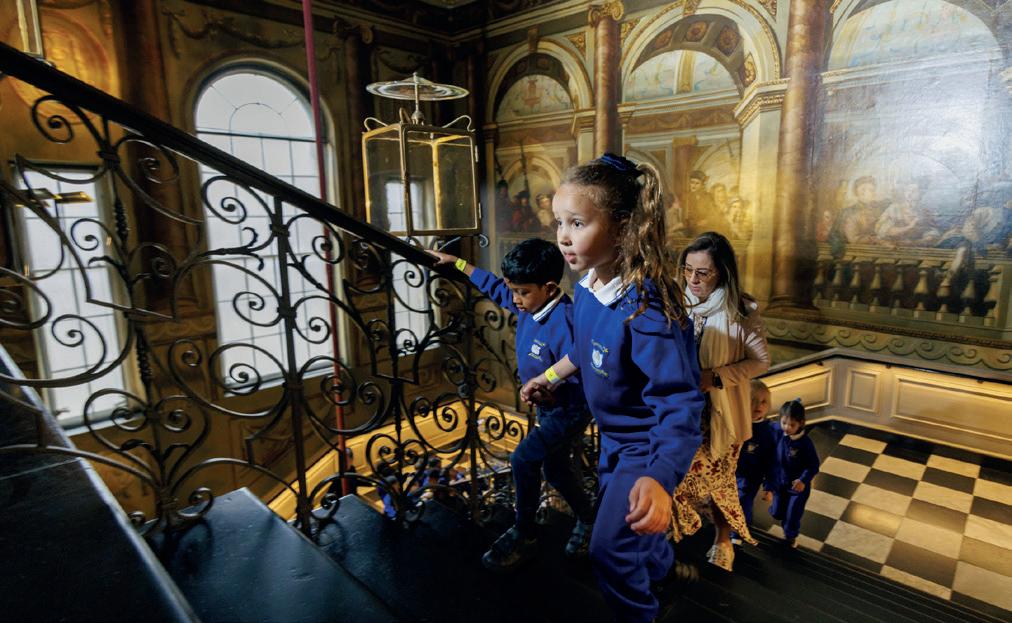
Ensuring that young people have access to the right advice, opportunities and insights about working in the heritage sector is a vital part of Historic Royal Palaces’ (HRP) work to break down barriers to opportunity. For many individuals, careers in heritage and leisure are either unfamiliar or seem out of reach. HRP is committed to making access to experience in the sector more equitable, and to enabling a wider and more diverse range of individuals to imagine a future for themselves in heritage.
Through work experience, internships, apprenticeships and academic partnerships, HRP aims to open up heritage to those from underrepresented backgrounds and to help people develop the skills, knowledge and confidence to pursue a career in this sector. These programmes do more than offer insights into HRP as an employer- they offer young people a structured introduction to working life, often for the first time, and play a crucial role in shaping future career choices.
However, widening access also means addressing challenges, such as ensuring that opportunities reach those who might not otherwise hear about them and supporting individuals who face more complex barriers to employment within the sector.
Work experience forms a central part of HRP’s strategy to widen access. The organisation runs a series of work experience days and longer taster weeks designed to introduce young people to careers in the heritage sector.
One of the key initiatives is HRP’s community partnership Work Experience Week (based at the Tower of London), a five-day programme designed to give young people practical insight into heritage careers. For many participants, this is their first time living away from home or commuting to a workplace independently. As a result, the experience goes far beyond sector-specific learning. Participants gain valuable transferable skills, such as time management, communication and selfconfidence, that are crucial in any professional environment. Notably, several past participants have gone on to apply for apprenticeships with HRP, demonstrating the programme’s role as a gateway to longer-term career paths. Early plans are now in motion to develop a wider and more comprehensive HRP wide work experience programme.
In collaboration with the Naz Legacy Foundation, HRP also offers placements at the Tower of London for students from schools taking part in the Foundation’s Diversity Programme. This partnership ensures that young people from diverse and often underrepresented backgrounds are given the chance to explore career paths in heritage, history and culture.
HRP is committed to diversity and is an equal opportunities employer. It particularly welcomes applications from ethnic minority backgrounds that are historically underrepresented in both the heritage and wider cultural sectors. The work experience programmes play a key role in helping to redress this imbalance by providing accessible, supportive routes into the industry.
3.2.2
HRP offers a broad portfolio of apprenticeship programmes across areas including Gardens and Estates, Visitor Services, Audio Visual, Quantity Surveying, Legal, Public Engagement, Heritage conservation, Sustainability and Retail. These structured programmes combine on-the-job training with formal education and are open to individuals post-GCSE through to degreeequivalent standards.
HRP has made a conscious decision to remove barriers to entry - there is no degree requirement to apply. Historically many careers in heritage require degrees, masters and PhDs and HRP wants to offer an alternate route into the industry. The only academic prerequisite is Level 4 English and Maths, making apprenticeships a genuine and accessible alternative to university. Apprenticeships range from 12-month to 7-year roles, all based at HRP’s worldrenowned sites.
The roles that apprenticeships are offered in are also carefully selected to be more inviting to those who may not have considered HRP or Heritage as an industry for them by selecting roles that are not always obvious within the industry it opens up to not just those with an interest in heritage but also to those in emerging careers such as graphic design and content creation along with finance and legal and many other career options.
To reduce financial obstacles, all apprentices are paid the UK Real Living Wage and receive assistance with travel costs through Oyster or travel cards. In addition, HRP organises an annual residential for apprentices to help foster a sense of community and offer a taste of university-style learning and independence. Peer-to-peer support is essential in the success of HRP’s apprenticeship programmes, as apprentices are spread across twelve different standards, meaning many are the only learner on a particular course, which can risk feelings of isolation in their studies.
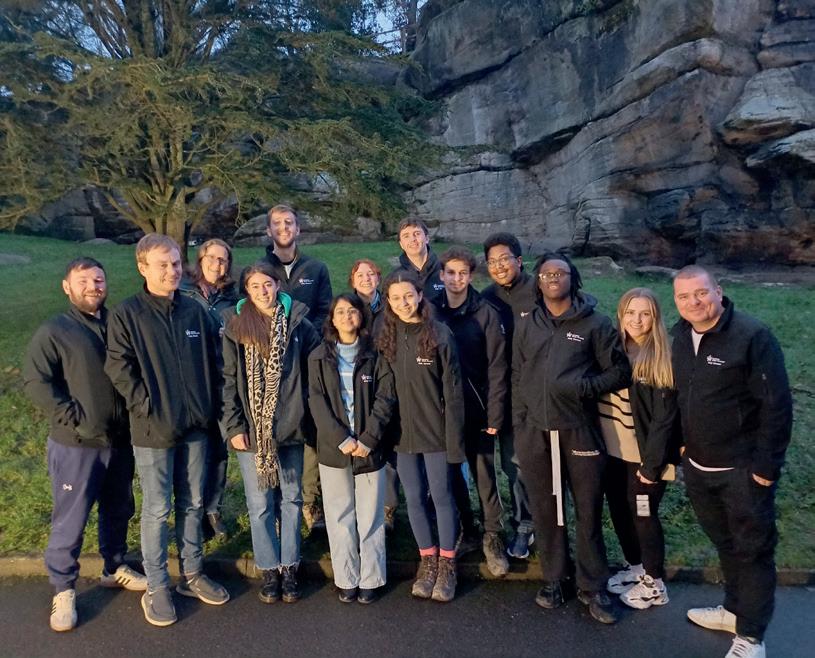
By fostering a strong cohort environment, HRP ensures that apprentices feel part of a wider team and creates an environment in which they can thrive.
Another important initiative that HRP have introduced is to offer a space on the Level 4 Learning and Skills Mentor Apprenticeship to teams that are hosting an apprentice. This course utilises the Apprenticeship Levy to upskill the organisation with accredited training whilst building a network of trained mentors to not only support apprentices but anyone entering the charity.
These efforts are yielding clear results. HRP’s apprenticeship cohort is significantly more diverse than the sector average, with 42% of apprentices coming from ethnic minority backgrounds.
A key enabler of this success is HRP’s approach to funding. All apprenticeship programmes are centrally funded through the HR department, rather than individual teams. This removes any budgetary disincentive and encourages departments to create meaningful learning roles that promote inclusive recruitment and long-term development.
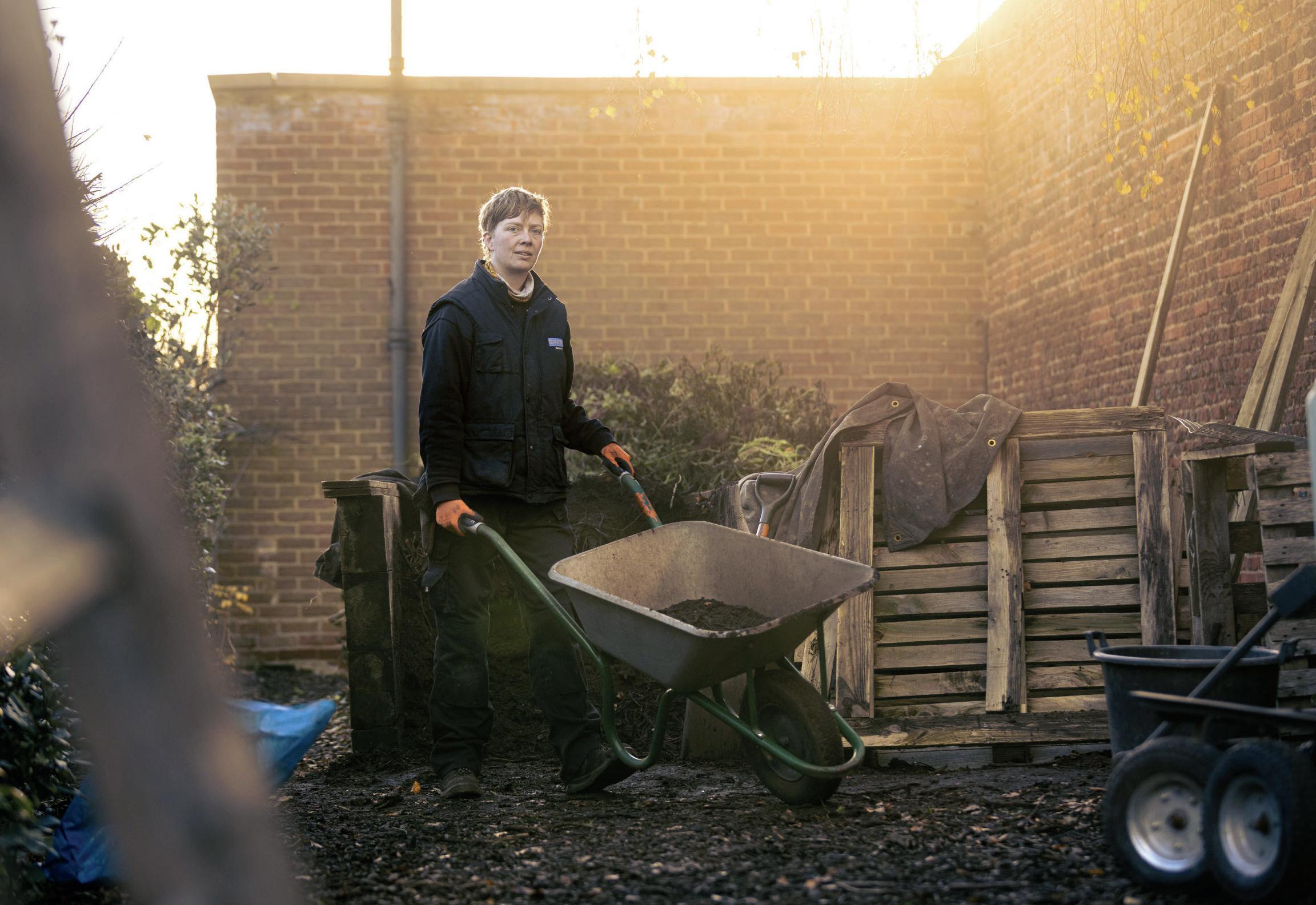
HRP recognises the importance of designing flexible, inclusive routes into heritage work for all groups, and is considering how future access initiatives can be adapted to support this aim.
3.2.3 Academic Partnerships
HRP partners with Queen Mary University of London to deliver a Master’s degree in Heritage Management. This programme includes placements at HRP sites and allows students to apply academic theory in a real-world heritage setting.
Importantly, HRP has committed to widening participation at postgraduate level by offering two fully funded bursaries per year to students from disadvantaged backgrounds. This initiative reflects HRP’s understanding that barriers to access in the heritage sector do not end after school or undergraduate education, and its belief that progression to higher-level roles must be made accessible to all.
3.2.4 Challenges
Despite the positive impact of HRP’s access initiatives, a number of challenges remain.
One ongoing concern is how to ensure opportunities reach a truly diverse talent pool. While partnerships and school outreach are effective, HRP is exploring new and innovative ways to advertise roles and placements, particularly to audiences from whom they have not traditionally attracted applications and those who might not see themselves represented in traditional heritage narratives.
There is also an ambition to expand support for people facing more complex barriers to employment, such as individuals experiencing homelessness, refugees, neurodiverse people, people with mental health difficulties and people with learning disability. HRP recognises the importance of designing flexible, inclusive routes into heritage work for all groups, and is considering how future access initiatives can be adapted to support this aim.
Ensuring that recruitment processes are inclusive, consistent and transparent is a major part of achieving greater equality of opportunity in the heritage and leisure sector. At Historic Royal Palaces (HRP), the commitment to fair recruitment is underpinned by a recognition that the workforce must reflect the diversity of contemporary UK society.
HRP has established a strong reputation as an inclusive employer, with IIP gold status since 2014. This strong employer brand, alongside the allure of working in some of the UK’s most iconic historic sites, attracts considerable interest: in the last year alone, HRP received over 12,000 applications for 500 roles. Despite this competitiveness, the organisation remains focused on removing barriers to entry and supporting candidates from underrepresented backgrounds.
To ensure recruitment is a driver of opportunity, HRP has set a clear three-year goal to reflect the diversity of the UK population, with an emphasis on inclusive recruitment practices that support this ambition.
HRP’s inclusive recruitment strategy begins with how and where it advertises its roles. Job adverts are intentionally placed across a variety of online platforms, specialist job boards, university outreach programmes and careers fairs, including in locations identified as harder to reach or underrepresented. This proactive approach ensures that HRP roles are visible to a broader and more diverse range of potential applicants.
Crucially, job specifications have been redesigned to remove unnecessary barriers. HRP does not require candidates to hold university degrees or formal qualifications unless essential to the role, helping to widen access to those who may not have taken a traditional educational path. The organisation also uses a gender-neutral language tool when drafting adverts, aiming to prevent unintentional bias that may deter certain groups from applying.
Accessibility and transparency are built into every stage of the application process. HRP’s recruitment platform offers detailed information about each role, sometimes including videos that illustrate a typical day in the position, helping candidates gain a fuller understanding without needing to ask - a step that some may find daunting. Applicants are typically invited to submit a CV, covering letter and responses to role-specific questions designed to assess suitability beyond academic achievement alone.
The interview stage is carefully managed to ensure fairness and accessibility. Candidates are interviewed by panels either in person or online, depending on what best supports inclusion. HRP uses consistent questions across candidates and is actively moving toward scenario-based questions, which are recognised as more accessible for those from a wider range of backgrounds. Interviewers are equipped with guidance on fair recruitment practices and HRP is working to roll out enhanced training across all staff involved in hiring. Anonymous recruitment is also a central feature of HRP’s recruitment approach, helping to mitigate unconscious bias during initial stages. While HRP acknowledges that such practices do not fully eliminate the risk of bias at later stages, they form a meaningful part of a wider effort to recruit more fairly.
One area where HRP has seen notable success is in the provision of feedback to unsuccessful candidates who request it. This not only helps to support individual development, but also strengthens the organisation’s wider talent pipeline- there are instances where candidates who were not initially successful have reapplied, improved their applications based on the feedback and ultimately secured a role.
To ensure fairness, HRP has trialled undertaking reviews of each stage of the recruitment process, analysing whether there is a disproportionate drop-off in applicants from certain groups. Where patterns have been identified, steps were taken to adjust processes and reduce structural barriers.
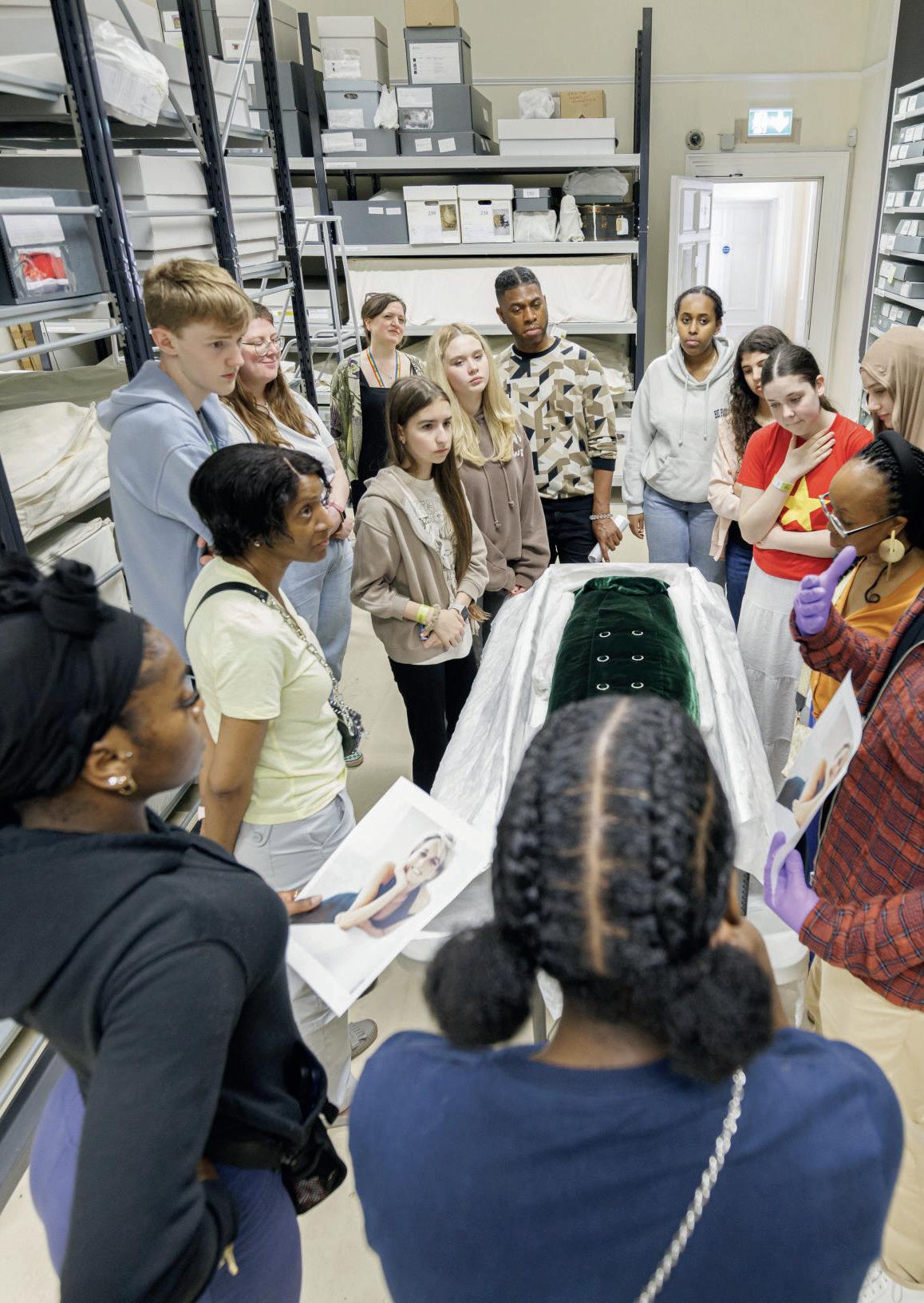
HRP recognises that genuine inclusion requires more than equitable processes- it also means accommodating individual needs. All candidates are encouraged to request reasonable adjustments to support their participation in the recruitment process.
Examples of adjustments made include providing interview questions in advance, enabling accompaniment at interview or addressing the specific accessibility challenges posed by HRP’s historic buildings. Ensuring that all applicants are able to access and participate fully in each stage of the process is a priority.
Despite significant progress, HRP acknowledges the ongoing challenges that exist within the recruitment landscape. The organisation sometimes needs to fill roles quickly, which can make it more likely to select ‘job-ready’ candidates over those who may require additional support, but offer long-term potential. There is a recognised need to be more creative in recruitment decisions by taking calculated risks to support non-traditional candidates who, with the right backing, could thrive.
Another challenge lies in linking up early-stage experiences, such as apprenticeships or work placements, with long-term employment. HRP is exploring ways to strengthen this internal talent pipeline, ensuring that participants in early careers programmes are supported to progress into full-time roles.
Technology access presents a further barrier. With applications currently submitted online, candidates without access to appropriate technology or without the requisite skills, may struggle to complete the process. HRP is considering making its application platform more accessible via mobile devices in future recruitment cycles. Consideration will also be given to more creative, less traditional methods of expressing an interest in employment opportunities.
Additionally, the organisation is limited by the number of roles that meet the Right to Work sponsorship threshold. This restricts international recruitment and may pose challenges for filling specialist positions in the future, particularly as workforce skills needs evolve.
HRP acknowledges the ongoing challenges that exist within the recruitment landscape.
Supporting individuals to enter the heritage and leisure sector is only one part of the effort to increase access and break down barriers. The next step is ensuring that everyone, regardless of background, can thrive, succeed and achieve their career goals once they are inside an organisation. At Historic Royal Palaces (HRP), progression is not solely seen as an individual responsibility, but as an organisational commitment to equity and opportunity.
Progression must be accessible and transparent to all. That means colleagues must be provided with the knowledge, support and development needed to succeed in their current roles and to grow into new ones. Crucially, HRP recognises the need to support colleagues to progress as their authentic selves, without needing to assimilate to narrow cultural or social norms in order to fit in or move up.
3.4.1
A comprehensive induction programme introduces every new starter at HRP to the organisation’s values, goals and mission as a charity for everyone. This early grounding helps colleagues feel aligned with HRP’s inclusive purpose and gives them the tools to begin their career with confidence.
Beyond induction, HRP places a strong emphasis on continuous professional development (CPD). Staff can benefit from access to regular CPD sessions covering not only role-specific skills but also vital soft skills and leadership competencies. These sessions are tailored to the varying needs of teams across the organisation, ensuring relevance and effectiveness. For colleagues wishing to deepen their expertise further, HRP sponsors external training programmes that align with personal career goals, demonstrating a proactive investment in individual progression.
HRP has recently invested additional resource to enable the design and development of a comprehensive organisational wide learning and development programme that responds to identified needs.
Apprenticeship opportunities are also available for internal staff who wish to upskill while working. These roles offer practical, on-the-job training that allows colleagues to expand their knowledge and qualifications without stepping away from their roles or income, with a number of colleagues currently undertaking the Level 3 Teamleader programme and many developing their professional mentoring skills by undertaking the Level 4 Learning and Skills mentor apprenticeship standard.
Regular informal performance conversations are encouraged, enabling managers and team members to identify individual objectives, development needs and pathways to progression. This feedback model can ensure that career planning is an ongoing, dynamic process, rather than a once-a-year review.
These mechanisms together can create a developmental environment where every colleague can access the tools they need to succeed. However, the challenge of ensuring equal access to these opportunities across all groups remains ongoing and demands continual attention and evaluation.
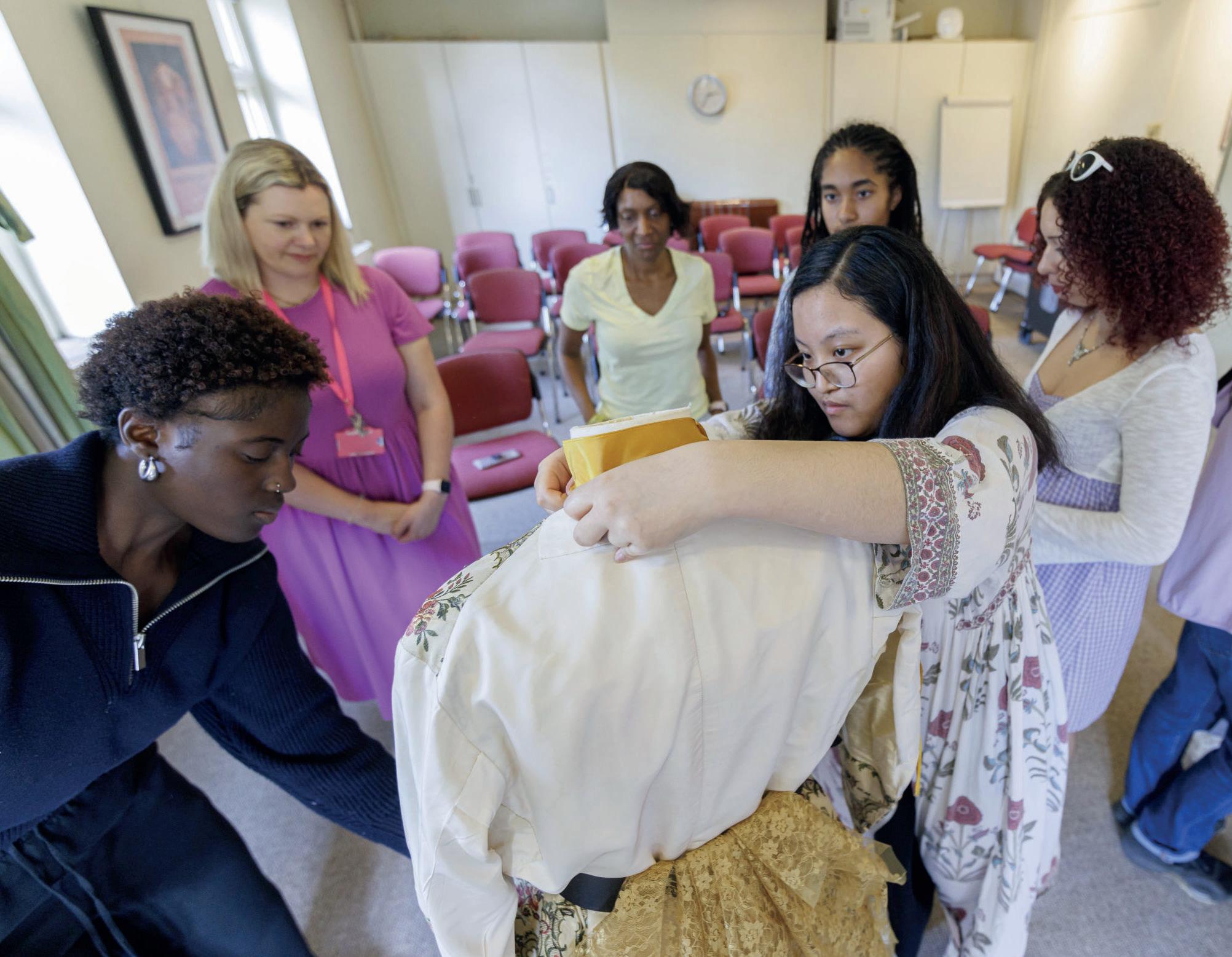
3.4.2 Building an Inclusive Culture
HRP’s strategic ambition is embedded not only in its public engagement work, but also in how it supports its staff. Creating an inclusive and welcoming culture is central to enabling people to progress and thrive.
The network celebrates difference through events to mark moments such as Pride and Black History Month.
The HRP Inclusion Network currently boasts over 100 members, representing more than 10% of its workforce. The network celebrates difference through events to mark moments such as Pride and Black History Month. It helps to foster an environment in which colleagues feel able to succeed without suppressing aspects of their identity. Crucially, it seeks to break down the notion that professional success requires cultural conformity, demonstrating that colleagues can progress while being their authentic selves.
A programme is also set to launch which will provide paid volunteering days for staff to contribute to HRP’s charitable efforts. This initiative not only supports community engagement but also strengthens a sense of shared purpose and belonging among staff.
Despite HRP’s strong foundation, there remain challenges to equitable progression. One of the key barriers is the organisation’s low turnover rate, a reflection of HRP’s reputation as a good employer. While this stability benefits staff in many ways, it can reduce the number of promotional opportunities available, particularly in smaller teams or specialist roles. It inevitably also restricts the flow of new people, ideas and perspectives in to the organisation.
Another issue is an historic tendency to focus on external recruitment for senior roles, which can unintentionally limit internal progression.
Shifting organisational mindsets to prioritise internal development and promotion, particularly for staff from underrepresented backgrounds, is essential if HRP is to fully live up to its ambition of being a charity for everyone.
Finally, there is a recognised need to increase visibility of role models throughout the organisation. HRP continues to explore how it can better support colleagues from all backgrounds to see themselves represented at all levels of the organisation and across the wider heritage sector. Representation, particularly in senior roles, plays a crucial role in making progression feel achievable for everyone.
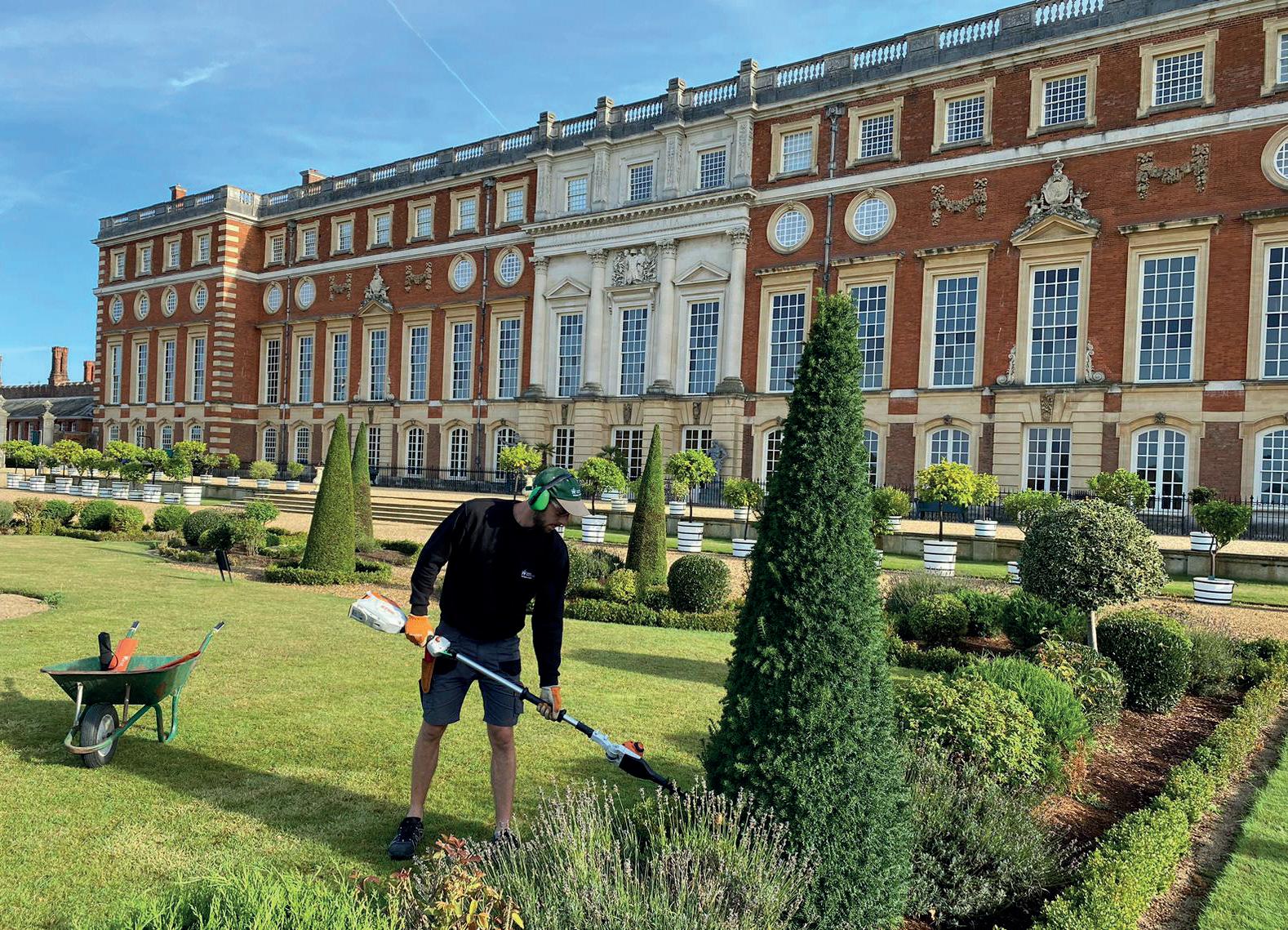
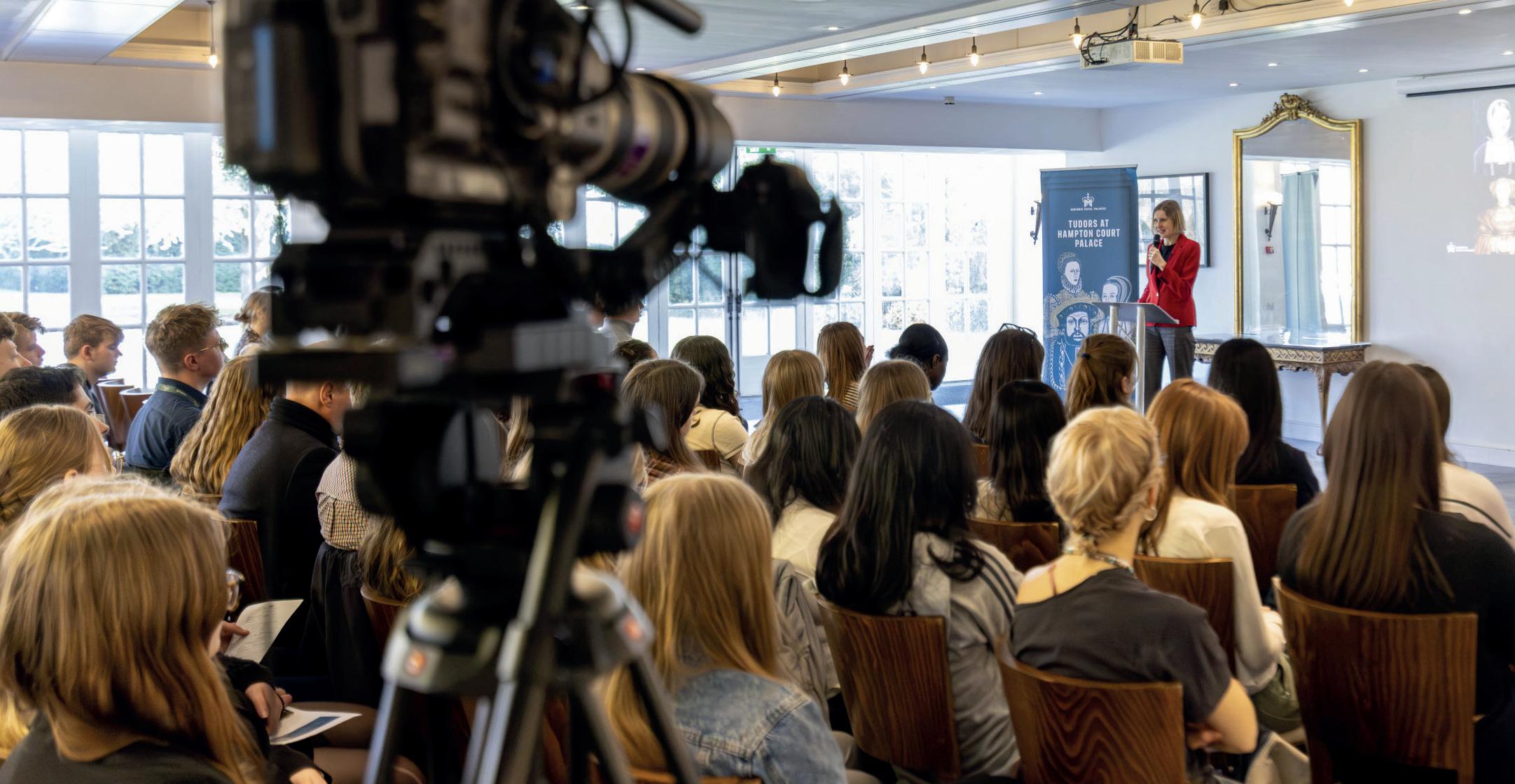
The insights shared by Historic Royal Palaces (HRP) during the Breaking Down Barriers to Heritage and Leisure roundtables have been gathered by This is Purpose to put together a range of strategic recommendations designed to support HRP in driving its social impact agenda forward even further.
Recommendations covering each of the four roundtable focus areas- outreach, access, recruitment and progression- are outlined in this section to provide HRP with a range of impactful measures to consider in their efforts to create greater equality of opportunity within the heritage sector.
• Attracting a more diverse talent pool into the heritage and leisure sector remains an ongoing challenge, particularly when seeking to engage young people at the earliest stages of the career pipeline. To address this, Historic Royal Palaces could consider strengthening its collaboration with This is Purpose to cohost dedicated Purpose Lab sessions. These sessions, which engage university and college students in designing responsible business strategies and social impact initiatives, offer HRP a valuable opportunity to build deeper connections with younger audiences. Participating in Purpose Labs could allow HRP to gain first-hand insights into the barriers preventing young people from pursuing careers in heritage, while also serving as a platform to challenge misconceptions about the sector and increase its relevance to emerging talent.
• To overcome geographical barriers and socioeconomic constraints, HRP could explore launching virtual work experience initiatives. These programmes would allow individuals from a wider range of backgrounds to engage with HRP regardless of location and could be offered alongside HRP’s on-demand learning resources. Such flexibility would particularly benefit those with limited availability due to work, study or caring responsibilities, ensuring that access to opportunity is not limited by circumstance.
• To support longer-term progression and ensure continuity for participants, HRP could consider introducing a structured entry-to-employment pathway. For example, a talent-bridging initiative could connect high-performing participants from HRP’s access and work experience programmes directly into apprenticeships or fixed-term entry-level roles within the organisation.
• To reduce barriers during the application stage, HRP could prioritise the development of a mobile-friendly recruitment platform. This would ensure equitable access for applicants without reliable desktop access, particularly young people and those from lower socioeconomic backgrounds who may rely on mobile devices as their primary means of internet access.
• While HRP has already embedded inclusive recruitment practices, it could now focus on increasing consistency across the organisation by rolling out specific relevant training to all hiring managers. These steps will ensure that inclusive recruitment is a standardised, organisation-wide practice.
• To support the advancement of internal talent, HRP could consider introducing an initiative which would involve setting aside a portion of vacancies for internal applicants and former programme participants. This approach would help strengthen pathways into permanent employment, particularly for individuals from underrepresented groups.
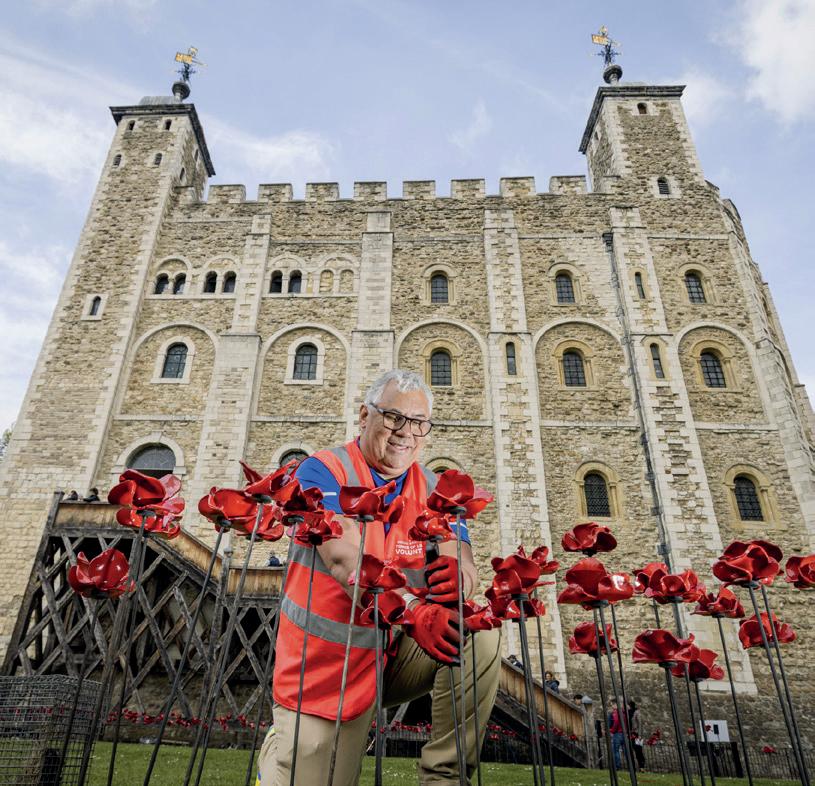
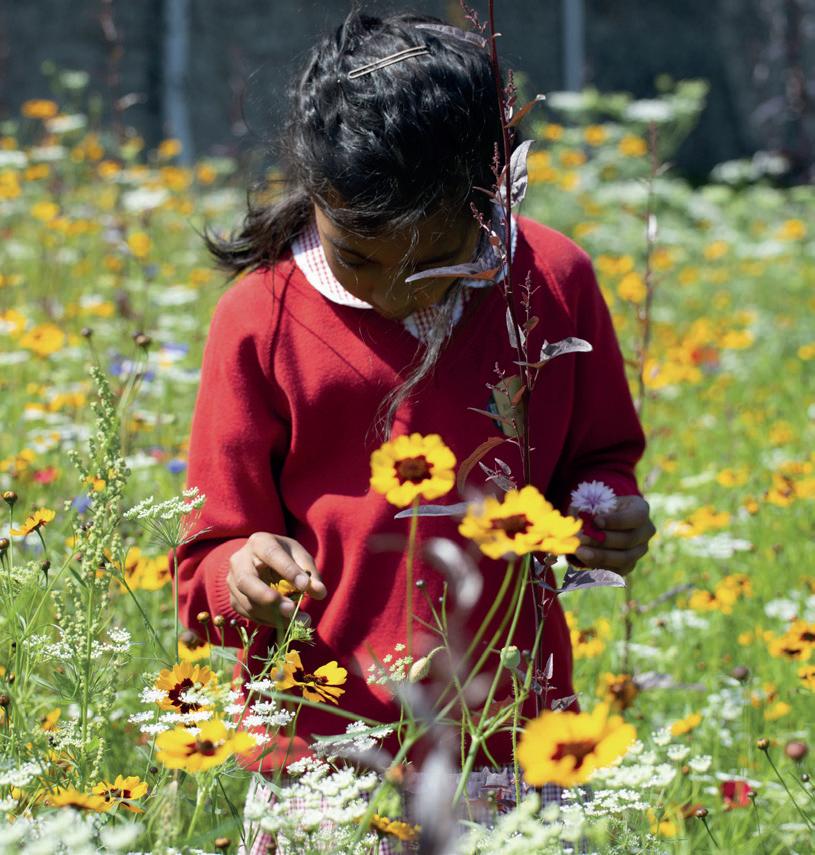
• To increase representation at senior levels, HRP could develop a targeted leadership development programme for employees from diverse backgrounds. This could include structured mentoring from senior leaders.
To support the advancement of internal talent, HRP could consider introducing an initiative which would involve setting aside a portion of vacancies for internal applicants and former programme participants.
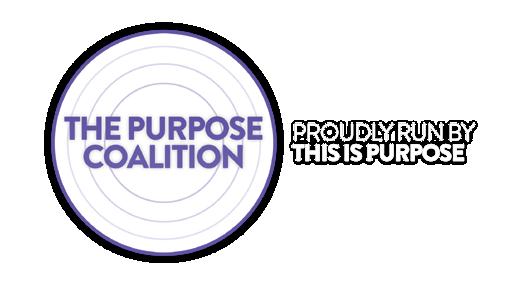
The Purpose Coalition campaign is proudly run by This is Purpose, part of Crowne Associates.
Copyright © 2025. Crowne Associated Ltd is a corporate affiliate member of the Chartered Institute of Public Relations, and reports lobbying activities to The Office of the Registrar of Consultant Lobbyists, in line with the Transparency of Lobbying, Non-Party Campaigning and Trade Union Administration Act 2014. You can read our Code of Conduct at crowneassociates.uk/code-of-conduct